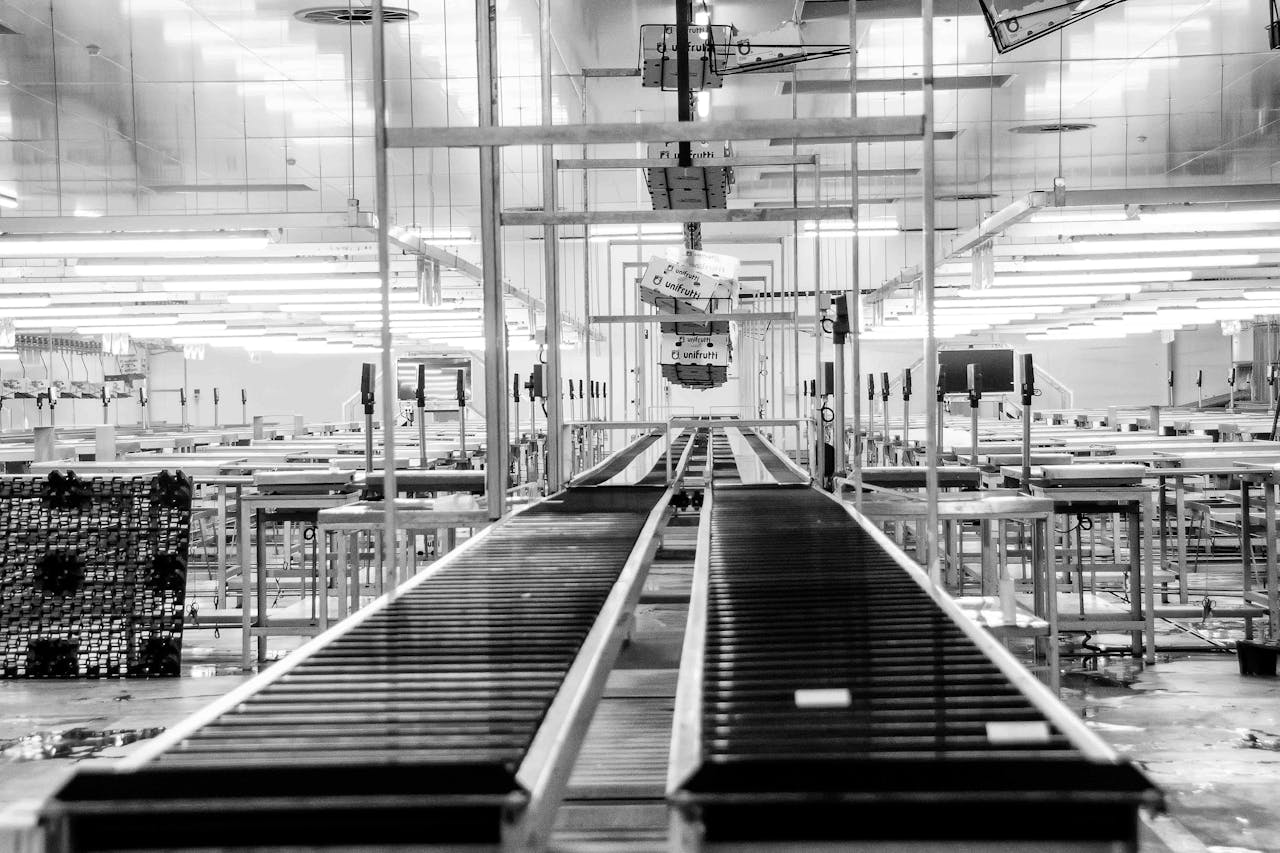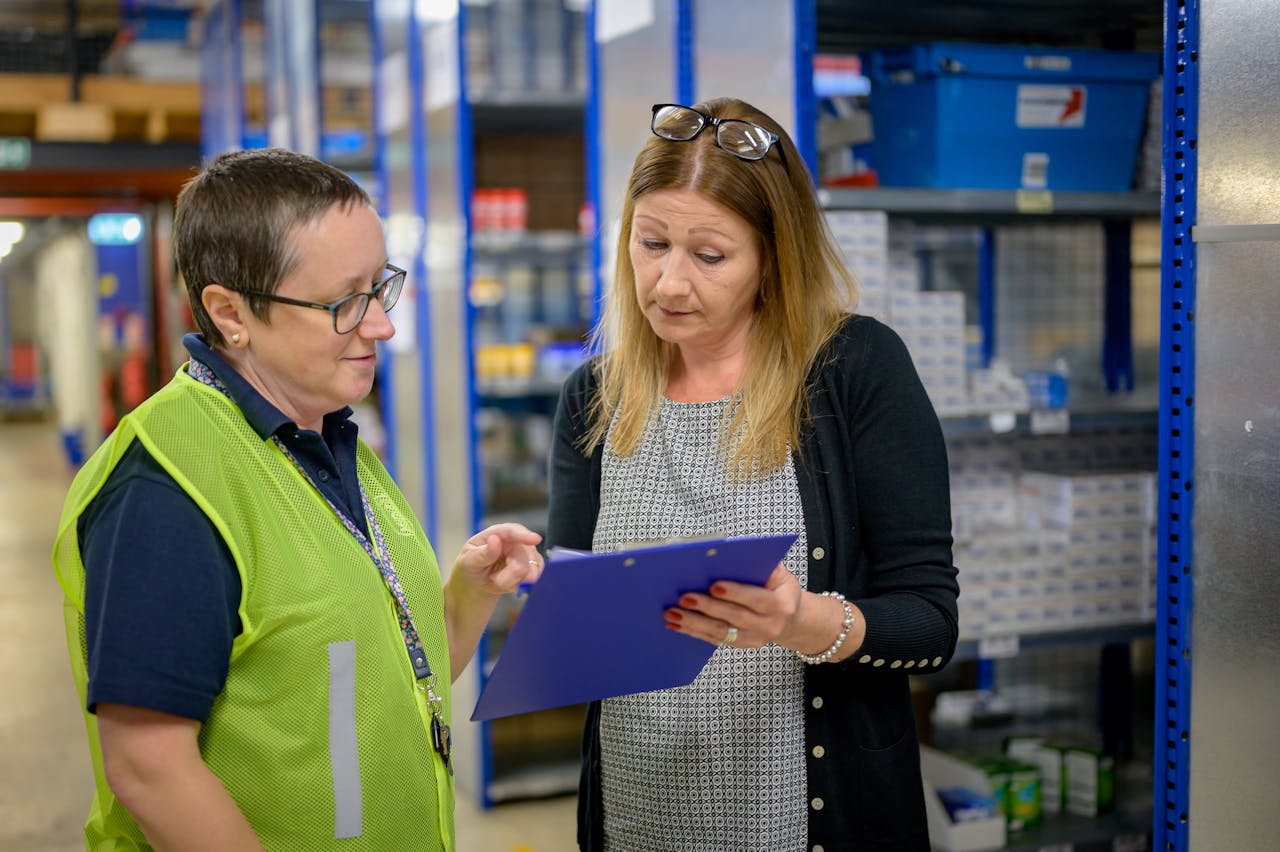Imagine your body automatically regulating temperature or heart rate – that’s natural process control. Modern industries use similar principles to manage complex operations. By refining how systems operate, businesses achieve smoother workflows and fewer errors, much like a well-oiled machine.
At its core, this approach ensures safety and consistency in industrial environments. When systems self-correct in real time, risks diminish. For example, overheating machinery can trigger automatic shutdowns, preventing costly accidents.
Efficiency gains often lead to substantial cost reductions. One automotive manufacturer slashed energy bills by 18% after recalibrating their assembly line protocols. Similarly, chemical plants report fewer production halts thanks to predictive maintenance strategies.
In this guide, we’ll explore practical steps for implementing these improvements. Drawing from manufacturing and chemical processing case studies, our methods are grounded in real-world success. You’ll discover how minor tweaks create major financial benefits.
Key Takeaways
- Smart adjustments mirror natural regulatory systems, enhancing operational reliability.
- Real-time corrections minimise safety risks in high-stakes environments.
- Energy savings and waste reduction directly lower overheads.
- Case studies from automotive and chemical sectors demonstrate measurable results.
- A structured approach ensures sustainable, long-term financial benefits.

Understanding Process Control and Its Impact on Business
Think of a thermostat adjusting room temperature automatically – that’s process control in action. It’s a system’s ability to monitor outputs and tweak inputs to stay within predefined limits. Industries rely on this principle to balance precision and adaptability, ensuring machinery and workflows perform as intended.
What is Process Control?
At its simplest, process control involves real-time adjustments to maintain stability. Sensors collect data, which algorithms analyse to make immediate corrections. For instance, a pharmaceutical plant might use it to keep drug synthesis temperatures within ±0.5°C, directly affecting product quality.
The Importance of Maintaining Consistency and Safety
Reliable systems minimise deviations that lead to errors. In oil refineries, pressure regulation prevents hazardous leaks. Food manufacturers use it to standardise batch flavours. This consistency isn’t just about meeting specs – it builds trust with clients and avoids recalls.
Proper process management also lowers long-term expenses. A study showed factories using automated controls reduced material waste by 22% annually. Fewer errors mean less rework, directly cutting costs while boosting output reliability.
| Aspect | Traditional Approach | Modern Process Control |
|---|---|---|
| Monitoring | Manual checks every 2 hours | Real-time sensors update every 5 seconds |
| Adjustments | Delayed human intervention | Automated system corrections |
| Outcome | Variable product quality | Consistent output within ±1% tolerance |
By prioritising stable operations, businesses create environments where both safety and profitability thrive. This foundation enables smarter decisions about upgrades, training, and resource allocation – key drivers of sustainable growth.
How Does Process Control Optimisation Reduce Industrial Costs?
Picture a bakery where ovens adjust temperatures automatically to prevent burnt loaves. That’s the power of smart system adjustments in action. By catching tiny inconsistencies early, businesses avoid snowballing expenses while keeping output rock-solid.
Cost Savings through Error Reduction
Minor deviations often spiral into expensive crises. Take sugar refineries: unmonitored pressure changes once caused £1.2m in equipment damage. Modern sensors now flag anomalies instantly, letting teams fix issues during routine checks. This proactive approach slashes repair bills by up to 40% in some manufacturing plants.
Customers benefit too. Consistent product quality means fewer returns and stronger brand loyalty. One electronics firm cut warranty claims by 31% after tightening their calibration protocols.
Enhancing Operational Efficiency
Streamlined workflows save time and resources. A textile organisation reduced dye waste by 27% using real-time viscosity monitors. Their energy use dropped 15% – savings passed directly to clients through competitive pricing.
| Factor | Traditional Methods | Optimised Systems |
|---|---|---|
| Issue Detection | Weekly audits | Instant alerts |
| Corrective Actions | Reactive repairs | Preventive adjustments |
| Customer Impact | Frequent delays | Steady delivery timelines |
Forward-thinking companies pair these tools with staff training programmes. Workers spot trends faster, turning potential disasters into quick fixes. The result? Operations hum smoothly, budgets stretch further, and everyone sleeps easier.

Key Methodologies and Steps in Process Control Optimisation
Consider traffic lights coordinating vehicles at busy junctions – that’s systematic regulation. Structured approaches in industry follow similar logic, turning chaotic variables into predictable outcomes. We’ll explore five core phases that transform unstable operations into reliable systems.
Five Fundamental Steps of Process Control
- Identify Variability: Pinpoint factors causing deviations, like temperature swings in plastic moulding
- Set Parameters: Define acceptable ranges (e.g., ±2% moisture in pharmaceutical tablets)
- Monitor Outputs: Use sensors tracking efficiency metrics every 30 seconds
- Analyse Data: Compare real-time readings against benchmarks
- Implement Adjustments: Automate responses, like slowing conveyor belts when sensors detect bottlenecks
Continuous Improvement Strategies
Regular reviews turn good systems into great ones. A beverage industry leader reduced bottling time by 14% through weekly performance audits. Teams spot trends faster, making incremental upgrades that compound over months.
| Approach | Traditional | Structured |
|---|---|---|
| Response Speed | Monthly reviews | Daily data dashboards |
| Problem Solving | Firefighting crises | Preventing issues |
| Product Quality | 95% compliance | 99.8% consistency |
This cycle of measurement and refinement cuts wasted time while boosting efficiency. Factories adopting these methods report 23% fewer defects across product lines. When teams standardise best practices, entire sectors raise performance bars – benefiting both businesses and consumers.
Integrating Industrial Maintenance with Process Control
Imagine a hospital running daily equipment checks to avoid surgery delays – that’s maintenance meeting mission-critical needs. In manufacturing, combining upkeep procedures with smart regulation creates self-healing production lines. This fusion keeps operations humming while dodging expensive breakdowns.
Two Paths to Operational Reliability
Industrial maintenance ensures machinery performs within set parameters. When paired with process regulation, it becomes a strategic asset rather than a cost centre. There are two primary types of approaches:
| Approach | Trigger | Impact |
|---|---|---|
| Preventive | Scheduled inspections | Catches 73% of potential faults early |
| Corrective | System alerts | Reduces downtime by 35% post-failure |
Preventive tasks like lubrication schedules or belt replacements follow fixed timelines. A food packaging plant we worked with avoided £420,000 in lost revenue by replacing worn seals during planned stops. Corrective actions kick in when sensors flag anomalies – think vibration spikes in motors triggering immediate shutdowns.
Modern industrial asset management systems blend both methods seamlessly. They analyse historical data to refine inspection frequencies while enabling rapid response teams. One automotive supplier extended press machinery lifespan by 19 months through this hybrid model.
Well-designed maintenance procedures create ripple effects. Fewer emergency repairs mean steadier output and happier clients. They also free up budgets for innovation rather than constant firefighting. When teams standardise these tasks, entire facilities shift from reactive to predictive modes – the hallmark of world-class operations.

Optimising Industrial Equipment and Production Processes
Picture a football team adjusting tactics mid-match based on real-time performance data. Modern factories now mirror this adaptability through smart equipment upgrades. Let’s explore how tangible changes in manufacturing settings deliver measurable improvements.
Real-Life Examples from Manufacturing and Engineering
Automotive plants showcase this evolution brilliantly. One European manufacturer integrated robotic welding arms with vision systems. These tools detect micron-level misalignments, reducing rework by 41%. Defect rates plummeted, while production speed increased 19%.
In aerospace, CNC machining centres now use AI-driven predictive automation. A case study revealed 27% fewer tool replacements after implementing vibration analysis sensors. This extended equipment lifespan while maintaining ±0.01mm precision across 85,000 components annually.
| Application | Traditional Approach | Optimised Method |
|---|---|---|
| Quality Checks | Manual sampling every hour | Inline laser scanners |
| Energy Use | Fixed-speed motors | Variable frequency drives |
| Output Consistency | 93% within spec | 99.6% compliance |
Food packaging lines offer another compelling example. A crisp producer installed moisture sensors that adjust sealing temperatures dynamically. This eliminated 3.2 tonnes of wasted packaging material monthly – savings that funded new automation upgrades within 11 months.
These aren’t futuristic concepts but working solutions implemented today. Through structured process optimisation strategies, teams achieve dual wins: lower operational expenses and superior product standards. The right tools transform theoretical gains into bankable results.
Digitalisation and Automation in Process Control
Smart homes adjust lighting based on occupancy – now factories do this with entire production lines. Digital tools transform rigid systems into responsive networks, where machines ‘talk’ to each other. This shift allows companies to anticipate issues before they escalate, creating self-regulating environments.
Leveraging IoT and AI for Predictive Maintenance
IoT sensors act as nervous systems for industrial equipment. They track vibrations, temperatures, and energy use 24/7. When paired with AI algorithms, patterns emerge – like bearings wearing out 30% faster than usual. One chemical company avoided 14 days of annual downtime by replacing parts during scheduled pauses.
This approach slashes errors caused by unexpected breakdowns. Teams receive alerts weeks in advance, turning panic into planned action. Maintenance costs drop by up to 25%, while asset lifespans stretch further.
Modern Tools and Software Integration
Platforms like Siemens MindSphere or Rockwell FactoryTalk merge data from diverse sources. They create unified dashboards showing real-time production health. A snack manufacturer integrated these tools, boosting output consistency by 11% across six facilities.
| Feature | Legacy Systems | Digital Solutions |
|---|---|---|
| Data Updates | Hourly manual logs | Live streaming every 2 seconds |
| Decision Speed | Days to analyse trends | Instant actionable insights |
| Error Margin | ±5% tolerance | ±0.8% deviation limits |
These advancements fuel continuous improvement cycles. Each tweak builds on previous data, creating compounding benefits. Companies adopting this mindset report 19% faster problem-solving and 34% fewer quality complaints annually.

Enhancing Quality, Safety and Customer Satisfaction
A suspension bridge’s cables adjust to wind loads in real time – that’s precision engineering protecting both structure and users. In industry, upholding standards isn’t just about compliance; it’s the backbone of trust. When systems self-regulate with surgical accuracy, businesses build reputations that outlast competitors.
Maintaining High Standards through Optimisation
Consistency begins with relentless monitoring. Sensors track variables like pressure tolerances in aerospace components or pH levels in cosmetics. This data feeds into dashboards where teams spot trends before they affect performance. One medical device maker achieved 99.97% defect-free output using live analytics.
Safety measures evolve through improvement cycles. Chemical plants now predict equipment failures 48 hours in advance by analysing vibration patterns. This proactive approach reduced workplace incidents by 63% in a recent study, while cutting insurance premiums.
| Factor | Traditional Monitoring | Optimised Approach |
|---|---|---|
| Response Time | Post-incident analysis | Pre-emptive alerts |
| Customer Returns | 4.2% monthly average | 0.9% post-implementation |
| Audit Pass Rate | 88% | 99.5% |
Satisfied clients become loyal advocates. A packaging firm noted 34% higher repeat orders after standardising seal integrity checks. Their business growth outpaced rivals by focusing on measurable improvements rather than shortcuts.
By prioritising these elements, companies don’t just meet expectations – they redefine them. The result? Operations that protect people, delight customers, and drive sustainable success.
Utilising Process Street for Effective Process Management
Imagine following a chef’s recipe where every ingredient measurement auto-updates based on taste tests. Process Street brings that level of precision to business workflows through smart documentation and automation. This platform transforms chaotic tasks into repeatable systems, ensuring teams deliver consistent results without overlooking critical steps.
Benefits of Checklists, Templates and Automation
Standardisation lies at the heart of reliable service delivery. Pre-built templates guide staff through complex procedures, from equipment inspections to client onboarding. A logistics company reduced shipment errors by 62% using custom checklists that flag missing documentation before dispatch.
Integrated software solutions excel at spotting patterns humans might miss. Real-time analysis identifies bottlenecks in approval chains or recurring issues in quality checks. One healthcare provider cut patient wait times by 19% after automating appointment reminders and follow-up surveys.
| Approach | Manual Methods | Process Street Solution |
|---|---|---|
| Task Completion | 87% adherence | 99% compliance |
| Error Rate | 8% monthly average | 1.3% post-implementation |
| Training Time | 6 weeks | 3 days |
Automation features handle repetitive work seamlessly. Customer service teams using conditional logic in templates resolve 34% more enquiries daily. These tools free staff to focus on complex issues, enhancing both efficiency and job satisfaction.
By marrying structure with flexibility, businesses create self-correcting systems. The result? Smoother operations, happier clients, and resources allocated to innovation rather than damage control.

Cost-Effective Process Optimisation for the US Market
America’s bustling manufacturing hubs face unique pressures – stringent regulations, skilled labour shortages, and razor-thin profit margins. Yet these challenges spark innovation. By aligning operational tweaks with local market needs, businesses unlock resilience while keeping expenses lean.
Market Advantages and Economic Benefits
US industries thrive when balancing compliance with agility. Strict safety standards from bodies like OSHA drive smarter resource allocation. A Midwest steel plant cut compliance costs by 37% after adopting real-time emission monitoring. Their productivity rose 12% as automated reports replaced manual audits.
Proactive services now prevent problems before they escalate. Consider these shifts:
| Factor | Traditional Approach | Optimised Strategy |
|---|---|---|
| Compliance Costs | $2.3m annually | $1.4m with predictive tools |
| Incident Rate | 8.2 per 100 workers | 2.1 via enhanced protocols |
| Audit Frequency | Quarterly manual checks | Continuous digital tracking |
Energy-intensive sectors reap particular rewards. A Texan chemical supplier slashed utility bills by 29% using AI-driven load balancing. Their monitoring systems adjust processes during peak rate hours, passing savings to clients.
Logistics firms demonstrate similar gains. One West Coast operator reduced delivery delays by 41% through route optimisation services. Real-time traffic data feeds into scheduling algorithms, maximising fleet productivity.
These strategies align with findings from recent studies on operational efficiency. Companies embracing tailored solutions outpace competitors in customer retention and regulatory compliance. When safety and innovation converge, profitability follows naturally.
Advanced Tools and Technologies for Process Control
A forest ecosystem self-regulates through interconnected species – modern factories achieve similar harmony via smart tools. Cutting-edge technologies now address sector-specific challenges while elevating operational standards. From pharmaceuticals to automotive sectors, tailored solutions bridge gaps between ambition and execution.
Industry-Specific Solutions and Approaches
Pharmaceutical firms use AI-powered batch tracking to maintain purity standards. One company reduced contamination risks by 91% using spectral analysis sensors. Automotive plants deploy machine vision systems that spot microscopic defects, slashing warranty claims by £2.3m annually.
Software enables rapid changes without disrupting workflows. Cloud platforms update parameters globally in minutes, not weeks. This agility helps manufacturers adapt to shifting material costs or regulatory updates seamlessly.
| Industry | Traditional Tools | Modern Solutions |
|---|---|---|
| Food Production | Manual temperature logs | IoT-enabled thermal mapping |
| Energy | Reactive maintenance | Predictive analytics dashboards |
| Textiles | Fixed dye formulas | Real-time colour calibration |
Choosing the right solutions matters. A packaging supplier cut material waste by 34% after adopting laser-guided cutting systems. Their energy costs fell 18%, proving smart investments pay dividends.
These technologies don’t just meet current standards – they future-proof operations. By embracing sector-specific tools, businesses turn changes into opportunities rather than obstacles.

Change Management and Continuous Refinement in Process Control
Like a rowing crew synchronising strokes to navigate rapids, businesses must align teams when updating systems. Lasting improvements demand both structured planning and adaptability. Without buy-in from staff, even the smartest technologies gather dust. We’ve seen industries thrive by treating upgrades as collaborative journeys rather than top-down mandates.
Strategies for Effective Change Management
Successful transitions start with clear communication. Frontline workers often spot hurdles managers miss. A packaging firm boosted adoption rates by 58% after involving machine operators in software testing phases. Regular training sessions and feedback loops turn sceptics into advocates.
| Aspect | Traditional Approach | Modern Approach |
|---|---|---|
| Communication | Email memos | Interactive workshops |
| Feedback Channels | Annual surveys | Real-time digital platforms |
| Implementation Speed | 6-12 months | 2-4 months with agile methods |
Ongoing Performance Monitoring
Data-driven refinement keeps systems sharp. Live dashboards track metrics like energy use or defect rates, flagging trends before they become problems. One logistics company reduced fuel costs by 14% using GPS information to optimise delivery routes weekly.
New technologies enable proactive adjustments. Vibration sensors in motors, for instance, predict maintenance needs with 89% accuracy. Teams receive alerts days in advance, turning potential crises into scheduled tasks.
This approach creates self-improving cycles across industries. Regular reviews paired with staff input ensure upgrades deliver lasting value. When everyone contributes insights, businesses evolve faster than competitors.
Conclusion
Much like a symphony orchestra tuning instruments in harmony, modern industries achieve peak performance through refined coordination. The benefits of systematic process optimisation ripple across operations – from sharper safety protocols to leaner budgets. Businesses adopting these methods report fewer disruptions and stronger client relationships.
Advanced technology sits at the heart of this transformation. IoT sensors and AI-driven analytics have redefined maintenance schedules, while real-time data streams prevent quality slips. These tools don’t just fix problems – they anticipate them, creating self-correcting workflows.
Organisations embracing continuous improvement enjoy measurable advantages. Efficiency gains of 15-30% are common, alongside 40% fewer safety incidents in high-risk sectors. Customer satisfaction scores climb as consistency becomes the norm rather than the exception.
Digitalisation fuels this progress. Cloud platforms and predictive algorithms turn raw data into actionable insights, keeping teams ahead of market shifts. The result? Operations that adapt faster, waste less, and deliver reliably.
Forward-thinking companies now prioritise these strategies. By investing in smart technology and structured methodologies, they secure lasting competitive edges. The time to act is clear – those who modernise today will lead tomorrow’s industrial landscape.



